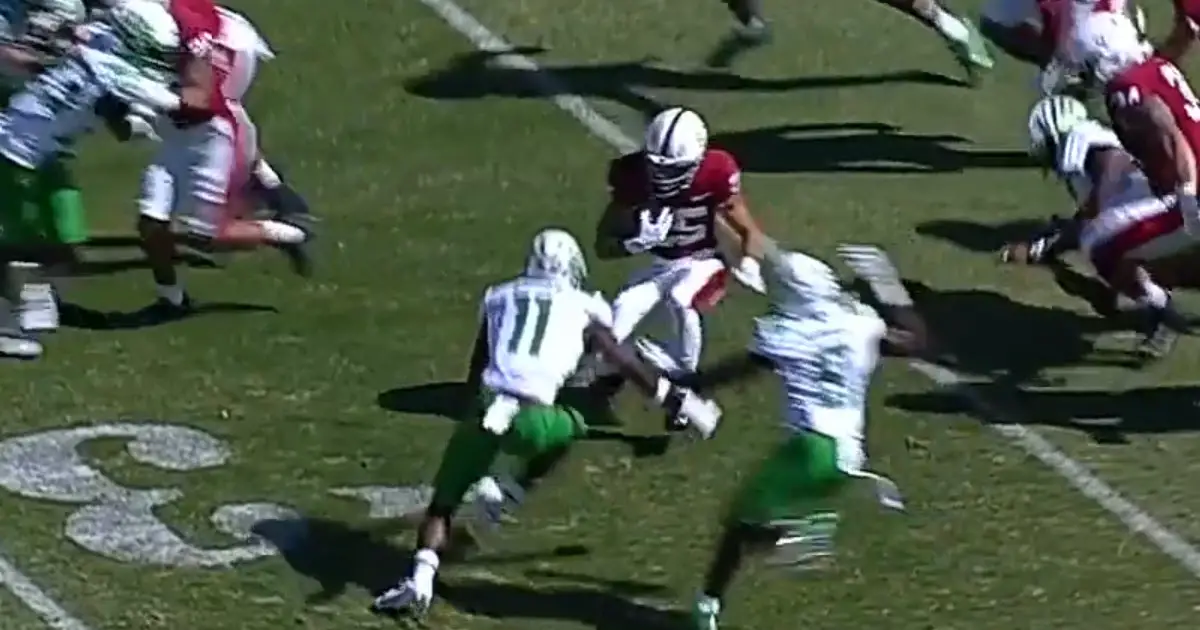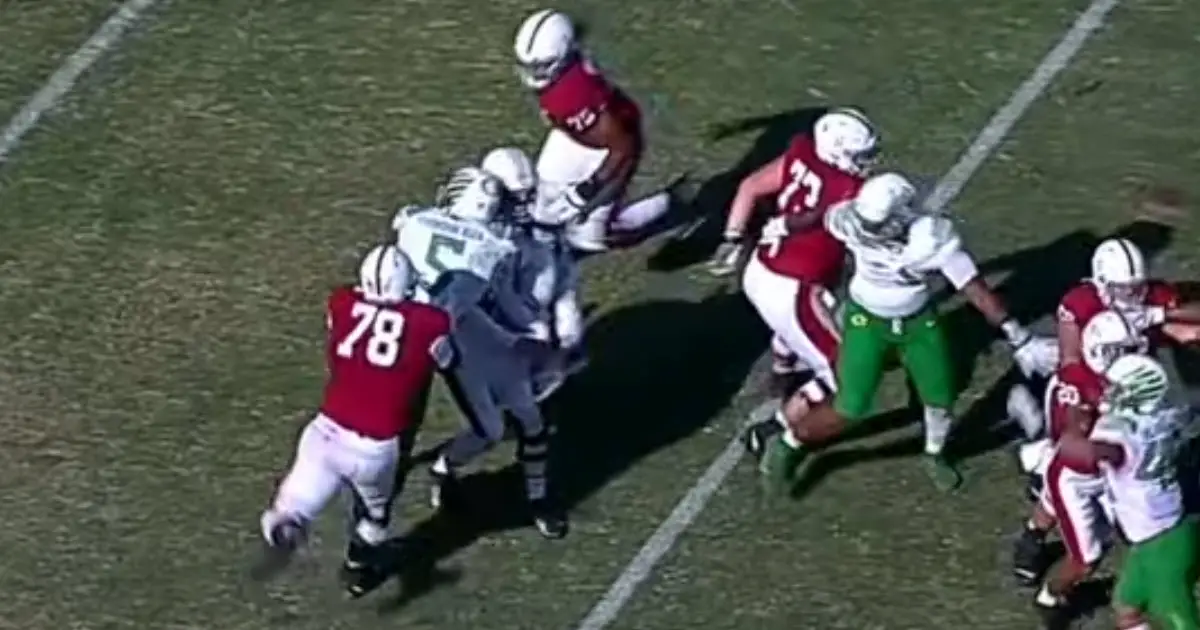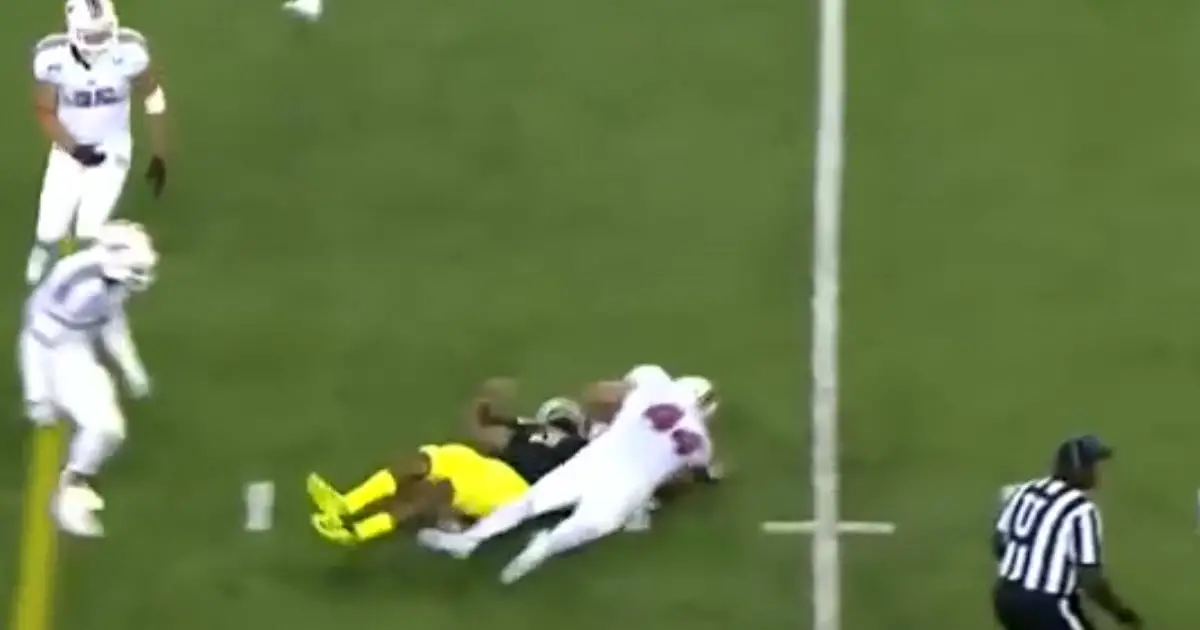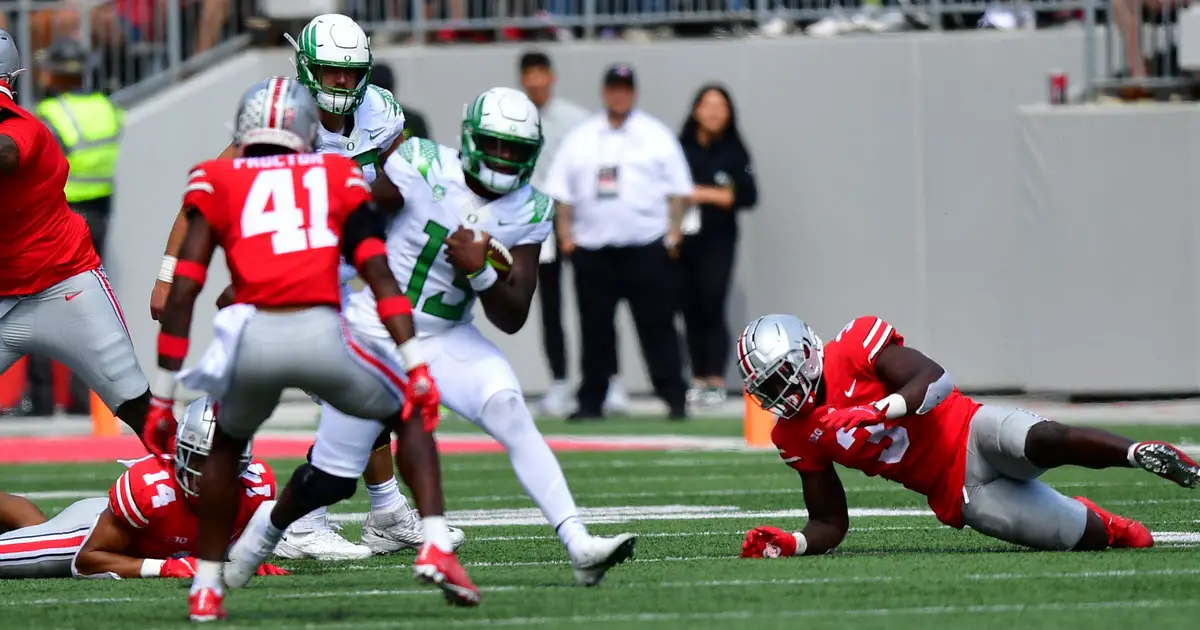The NCAA recently announced changes to the targeting rule. These changes are not yet in effect, but there will be a vote in April to adopt these proposals. In short, there are really no changes, other than that players can now appeal their suspension from a targeting penalty issued during the second half of a game to the conference. This proposed rule change will fail to address any of the problems with the current targeting rule.
It’s Not About Safety
When targeting rules were first created, it was about safety. Football is a dangerous sport and the only way it is going to survive into the future is if these safety concerns are addressed. The targeting rule has forced coaches and players to learn how to tackle without getting their heads down and ramming into opposing players. This is a good thing.
However, the targeting rule hasn’t done anything else to address safety besides changing the way players are supposed to tackle. When helmet-to-helmet contact occurs, it almost always brings a penalty on a defensive player, and often the contact is not malicious. Additionally, the player who is the victim of targeting is often not inspected for a head injury at all. If safety was truly a concern, both players involved in the helmet-to-helmet contact would be taken off the field and evaluated, as both were involved in a potentially concussion-causing collision.

Trikweze Bridges was called for targeting though the Stanford player also lowered his head.
If safety is of the utmost concern then there should be an independent NCAA or conference-affiliated doctor on the sideline who, along with the team’s medical staff, would need to give his or her approval in order to let a player who was involved in helmet-to-helmet contact go back on the field. This would be incredibly unpopular, but would do more to ensure player safety than the current targeting rule — which is little more than safety theater, designed to give us the illusion the NCAA cares about player safety.
Incidental Contact
Most targeting penalties are not malicious but just incidental contact. This last season as Ducks fans, we saw two such targeting penalties go against Oregon during the loss against Stanford. The first was on the first play of the game when Trikweze Bridges attempted to make a tackle against the kick returner.
The second, on the final drive of the game, Kayvon Thibodeaux was called for targeting when he made a tackle on Stanford’s quarterback. In Thibodeaux’s case he was in the air and was effectively pushed into the quarterback, and as he was coming down, helmet-to-helmet contact occurred.
By the letter of the law this was a targeting penalty, though it fails to take into consideration all the factors that went into this penalty. Thibodeaux was in the air and was pushed by other players into the quarterback and helmet-to-helmet contact occurred with the quarterback. That was not his intent but that is what happened. The Stanford quarterback was shaken up and was checked out on the sideline, and he returned later in the game. Whereas, Thibodeaux was out for the rest of the game and the first half of next week’s game against Cal.

Kayvon Thibodeaux is called for targeting at the end of the 2021 Stanford game, but was it his fault?
This was an accident, and this is a prime example of just how bad the targeting rule is for the sport and the players. The targeting penalty is designed to encourage the correct tackling behavior, but in the case of accidental contact, it only punishes the player making the tackle — most often the defensive player. As you can see from the image above, Thibodeaux did not lead with his helmet, but as he comes down, his helmet does make contact. Should this be targeting?
How Targeting Should Change
The targeting rule needs to change in order to make it about player safety. If incidental contact occurs that is hard enough to be flag-worthy, using today’s current standards, then all players involved need to go to the sideline for at least a play to be checked out. Once cleared, they may return to the field. There are no penalty flags for this action as it was incidental contact and was no malicious, it just happened.
If helmet-to-helmet contact occurs a second time in a game with a player already involved in one incidental contact, then it is appropriate to slap on some penalty yards, especially if this player was involved in initiating the contact. At this point, it is also time to pull the player from the game for a longer period of time. Depending on the situation, it may not be unreasonable to keep that player out for the rest of the game. This is about player safety and if players are engaged in multiple helmet-to-helmet contacts in the same game; they need to sit and be checked out.
Additionally, the number of helmet-to-helmet contacts should be logged from week to week. There should be safety protocols in place for players who are repeatedly involved in this activity. This could lead to suspensions if necessary.

Vernon Adams is hit by a former team member in 2015 after he was down. This was absolutely flagrant targeting.
But what about flagrant contact? Well, most sports have flagrant fouls, so why shouldn’t football have a penalty around flagrant targeting? It is usually pretty obvious when it’s flagrant, and it should come with the penalty we see today, if not a stricter one. If a player engages in flagrant targeting he should be ejected from the current game, there should be 15-yard penalty, and that player should not be allowed to play the entirety of the next game. Flagrant targeting is the behavior that is dangerous and should be met with the strictest punishments.
Right now there isn’t a difference in penalties between incidental targeting and flagrant targeting, and this is wrong from both a sportsmanship and safety standpoint. Football is not and will not be a safe sport; it has inherent dangers that come with playing the game, but the targeting rule needs more nuance.
Football has never been safer, but that doesn’t mean we shouldn’t continue to strive to make it safer. Helmet-to-helmet contact is still going to happen, so it needs to be focused on player health and safety and not just safety theater. The targeting rule must change to protect players rather than punish in the name of safety.
David Marsh
Portland, Oregon
Top Photo By Tom Corno

Natalie Liebhaber, the FishDuck.com Volunteer Editor for this article, works in the financial technology industry in Bozeman, Montana.

David Marsh is a high school social studies teacher in Portland, Oregon. As a teacher he is known for telling puns to his students who sometimes laugh out of sympathy, and being both eccentric about history and the Ducks.
David graduated from the University of Oregon in 2012 with Majors in: Medieval Studies, Religious Studies, and Geography. David began following Ducks Football after being in a car accident in 2012; finding football something new and exciting to learn about during this difficult time in his life. Now, he cannot see life without Oregon football.

